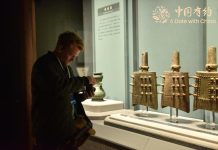ISLAMABAD: China-Pakistan Economic Corridor will boost religious and cultural tourism in Pakistan alongside promoting trade activities and industrialisation in the country.
CPEC would connect northwest China’s Xinjiang Uygur Autonomous Region with the Pakistani port of Gwadar through a modern network of roads.
The corridor would make possible the transfer of energy. Economic activities will be increased in the backward areas of Pakistan through which the corridor would pass.
CPEC is reflective of the geopolitical convergence between Pakistan and China. The corridor, linking Gwadar to China’s western city of Kashgar, would enhance China’s access to the markets of South Asia, Central Asia and the Middle East.
Likewise, CPEC would give an impetus to Pakistan’s struggling economy, which was hit hard by terrorism during the last more than two decades. The corridor would also enable China to secure oil routes and diversify trading options. Pakistan would turn into a hub of trade and economic activities after the Gwadar seaport is made fully functional.
Hamid Ali Gadhi, an archaeology scholar at Quaid-i-Azam University Islamabad, told WealthPK that in the Belt and Road Initiative (BRI), northwest China’s Gansu Province was identified as a portal for opening up to the West and building links with countries along the Silk Road. The province of Gansu is strategically located at a meeting point between eastern and western China. The ancient Silk Road, also known as Hexi Corridor, passes through Gansu.
He said that Linxia was a Muslims-inhabited area where the people followed their customs and religious beliefs. The Gannan Tibetan Autonomous Prefecture had been a major cultural and religious centre for Tibetans. The Labrang Monastery in the prefecture was established in 1709.
Pakistan is home to a large number of archaeological Buddhist sites. Buddhist pilgrims from Southeast Asia and other parts of the world visit Pakistan. In April 2021, a delegation of Buddhist monks from Sri Lanka visited Taxila, Lahore, Shahbaz Garhi, Takht Bhai and Swat. Buddhists mostly associate themselves with Taxila. Taxila is known as Taketo in Burmese, as it remained part of the ancient Gandhara Civilisation and has also been a centre of Buddhist learning. In addition to Buddhism, subjects like philosophy, political warfare, and medicine were taught at the university of ancient Taxila.
There are 150 Buddhist sites across the Malakand division. The remains of the sleeping Buddha statue have been found in Bamala, Khyber Pakhtunkhwa. The emerging regional connectivity against the backdrop of CPEC will link East Asia with Pakistan.
This linkage will create prospects for socio-economic cooperation and promote the inter-cultural exchange. In particular, the religious and historical sites in Pakistan will be an attraction for people of East Asia and will boost the economy of Pakistan through this tourism. CPEC would promote cultural and religious tourism in Pakistan, which would in turn contribute to strengthening the national economy.
–INP






